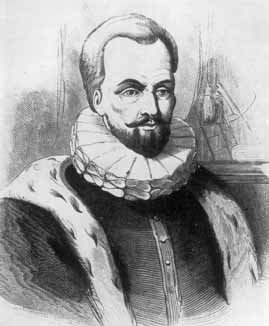- About MAA
- Membership
- MAA Publications
- Periodicals
- Blogs
- MAA Book Series
- MAA Press (an imprint of the AMS)
- MAA Notes
- MAA Reviews
- Mathematical Communication
- Information for Libraries
- Author Resources
- Advertise with MAA
- Meetings
- Competitions
- Programs
- Communities
- MAA Sections
- SIGMAA
- MAA Connect
- Students
- MAA Awards
- Awards Booklets
- Writing Awards
- Teaching Awards
- Service Awards
- Research Awards
- Lecture Awards
- Putnam Competition Individual and Team Winners
- D. E. Shaw Group AMC 8 Awards & Certificates
- Maryam Mirzakhani AMC 10 A Awards & Certificates
- Two Sigma AMC 10 B Awards & Certificates
- Jane Street AMC 12 A Awards & Certificates
- Akamai AMC 12 B Awards & Certificates
- High School Teachers
- News
You are here
'In these numbers we use no fractions': A Classroom Module on Stevin's Decimal Fractions
Editor's note: This article was published in August 2009.
Overview
This activity is suitable for a 75-minute class session, with the assigned reading excerpts, described in Parts II and III of the activity, completed prior to class. The activity itself is designed to introduce undergraduate students preparing to teach mathematics to Stevin’s pamphlet on decimal fractions and to encourage prospective mathematics teachers to think about connections with pupils’ initial learning of multiplication of decimals (see Part III of the activity). Consequently, instructors of courses on history of mathematics for teachers (at both the elementary and secondary level) or those using history in teaching, as well as instructors of courses on mathematics methods for teaching, may find the activity useful.
Introduction
Introducing fundamental school mathematics topics for student understanding is problematic for teachers in contexts that are compromised by rigid curriculum demands driven by mandatory high-stakes testing. Often, teachers claim they lack time to enrich their instruction with alternative perspectives and pedagogically illuminating practices. As a result, teaching mathematics is dominated by procedures and their application to well-chosen examples, rather than conceptually-rich approaches that promote student thinking, deep understanding, and appreciation for the development, beauty, and structure of mathematics.
 One way to challenge “mathematics as procedures” teaching practices is to provide preservice mathematics teachers (PSMTs) with opportunities to work on fundamental mathematics ideas from an historical perspective. In the process, PSMTs investigate pedagogical methods that not only enable their future students to focus on why mathematical procedures work, but also may increase PSMTs’ own content knowledge. In this classroom module, designed for use with post-secondary students (grades 13 – 16) preparing to teach mathematics at the late elementary or early secondary level, I present the treatment of multiplying two decimal fractions using Simon Stevin’s (1548 – 1620) “invention” of decimal fractions and his work that introduced notation, rules, and examples for how to use them.
One way to challenge “mathematics as procedures” teaching practices is to provide preservice mathematics teachers (PSMTs) with opportunities to work on fundamental mathematics ideas from an historical perspective. In the process, PSMTs investigate pedagogical methods that not only enable their future students to focus on why mathematical procedures work, but also may increase PSMTs’ own content knowledge. In this classroom module, designed for use with post-secondary students (grades 13 – 16) preparing to teach mathematics at the late elementary or early secondary level, I present the treatment of multiplying two decimal fractions using Simon Stevin’s (1548 – 1620) “invention” of decimal fractions and his work that introduced notation, rules, and examples for how to use them.
Simon Stevin (1548 - 1620)
Kathleen M. Clark (The Florida State University), "'In these numbers we use no fractions': A Classroom Module on Stevin's Decimal Fractions," Convergence (January 2011), DOI:10.4169/loci003333





